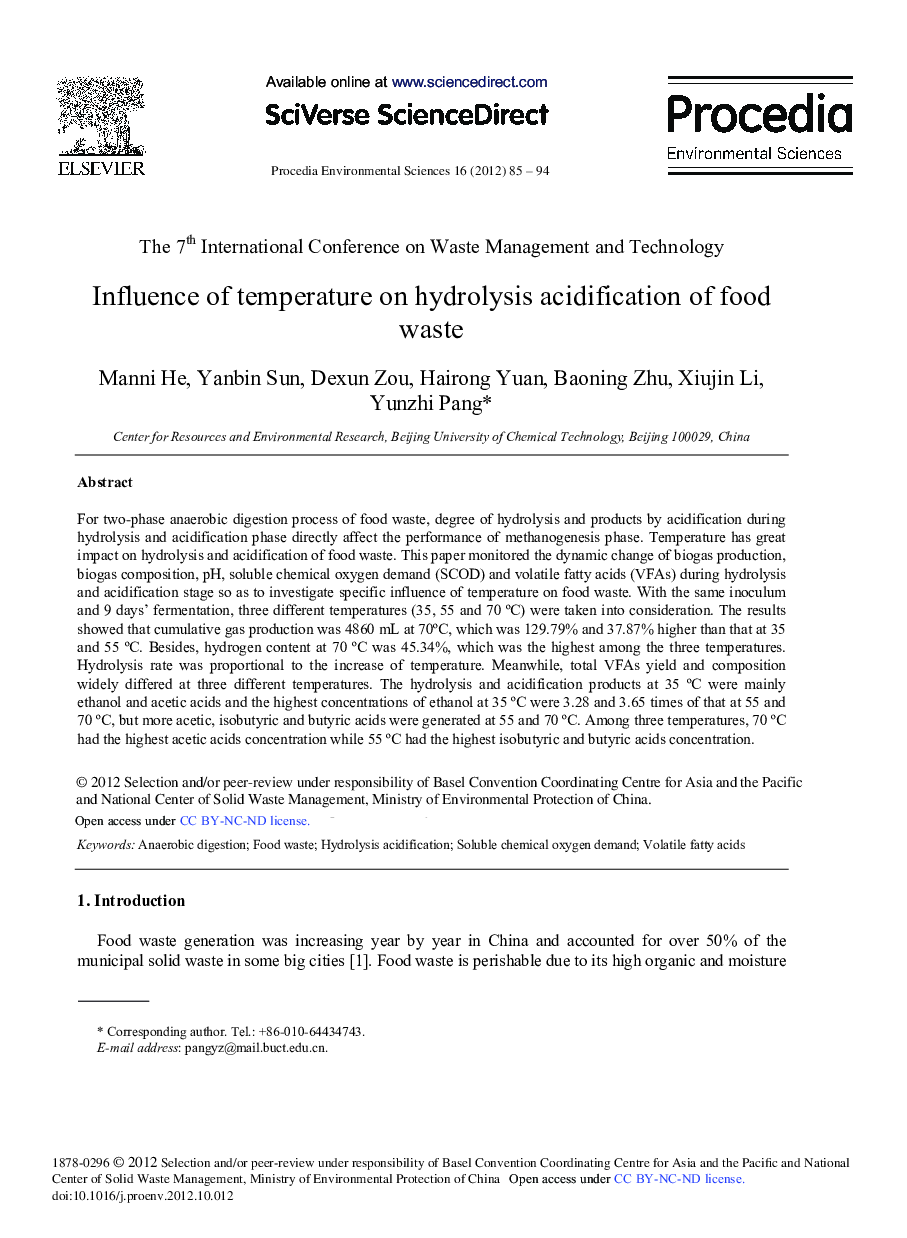| Article ID | Journal | Published Year | Pages | File Type |
|---|---|---|---|---|
| 4402640 | Procedia Environmental Sciences | 2012 | 10 Pages |
For two-phase anaerobic digestion process of food waste, degree of hydrolysis and products by acidification during hydrolysis and acidification phase directly affect the performance of methanogenesis phase. Temperature has great impact on hydrolysis and acidification of food waste. This paper monitored the dynamic change of biogas production, biogas composition, pH, soluble chemical oxygen demand (SCOD) and volatile fatty acids (VFAs) during hydrolysis and acidification stage so as to investigate specific influence of temperature on food waste. With the same inoculum and 9 days’ fermentation, three different temperatures (35, 55 and 70 °C) were taken into consideration. The results showed that cumulative gas production was 4860 mL at 70 °C, which was 129.79% and 37.87% higher than that at 35 and 55 °C. Besides, hydrogen content at 70 °C was 45.34%, which was the highest among the three temperatures. Hydrolysis rate was proportional to the increase of temperature. Meanwhile, total VFAs yield and composition widely differed at three different temperatures. The hydrolysis and acidification products at 35 °C were mainly ethanol and acetic acids and the highest concentrations of ethanol at 35 °C were 3.28 and 3.65 times of that at 55 and 70 °C, but more acetic, isobutyric and butyric acids were generated at 55 and 70 °C. Among three temperatures, 70 °C had the highest acetic acids concentration while 55 °C had the highest isobutyric and butyric acids concentration.
